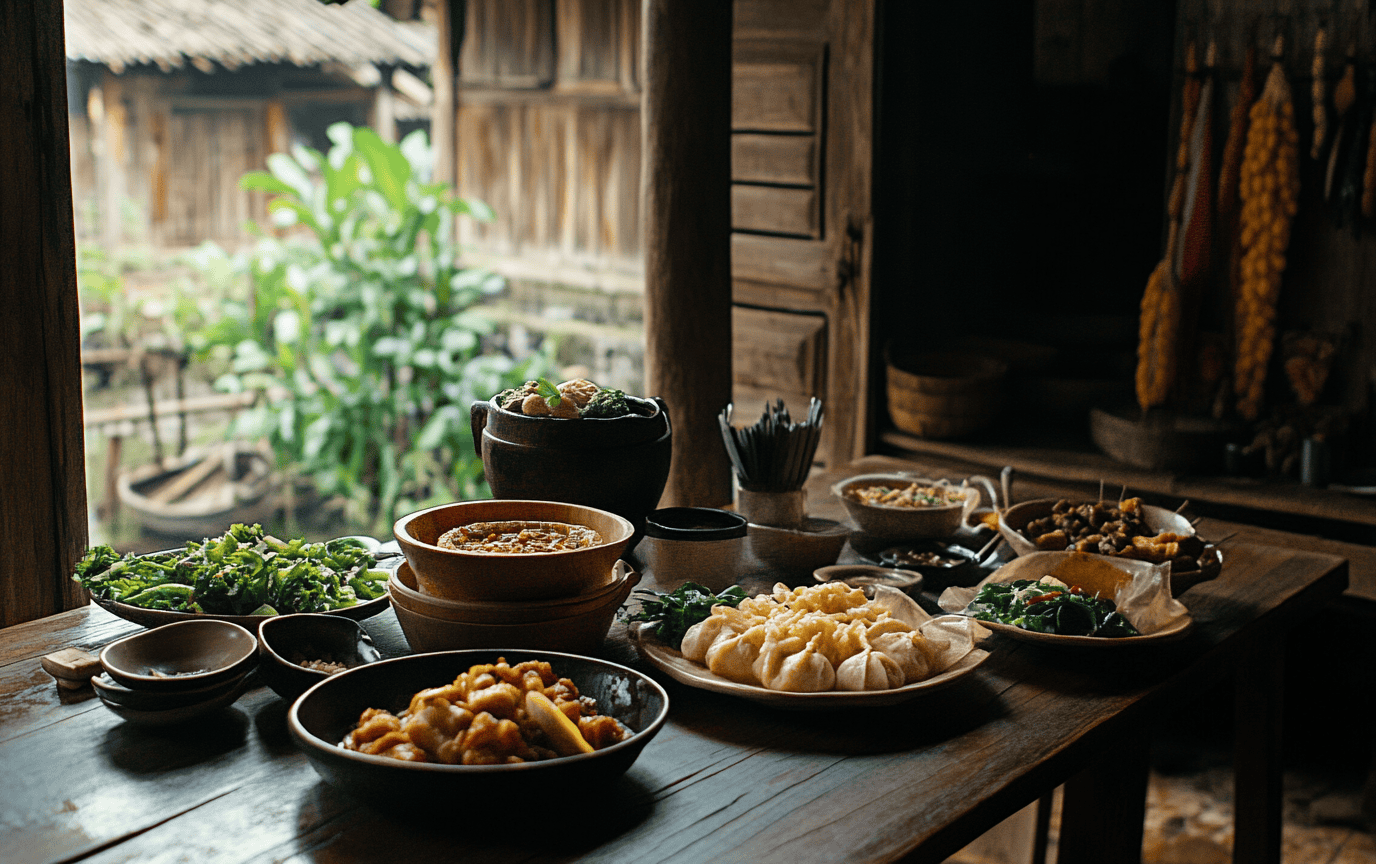Traveling is not merely about the sights we see; it’s about the flavors that linger on our tongues, the aromas that waft through the air, and the memories we create around a table. In the heart of every journey lies culinary tourism—a vibrant world where food becomes the passport to understanding a culture. So, why read this? Imagine biting into fresh pasta in Italy, feeling the warmth of spices in a Moroccan market, or sitting down with a family in Thailand to share a meal. If this stirs your wanderlust, then grab a seat at the table, my friends, as we embark on a savory journey through the realms of culinary travel, infused with personal anecdotes and sizzling hints.
The Rise of Culinary Tourism
Once upon a time, travelers ventured to distant lands simply to see landmarks or lounge by the beach. But in recent years, something magical has surfaced: the realization that food is as integral to culture as its history or landscape. This shift is partially due to social media, where every delectable dish and culinary mishap is immortalized in vivid photography. Platforms like Instagram and TikTok have curried favor for food experiences that tell a story beyond taste; they allow us to connect with chefs, farmers, and local traditions like never before.
I remember standing in a bustling marketplace in Bangkok, surrounded by the heady scent of lemongrass and chilies. A local chef enthusiastically explained the art of balancing flavors, and suddenly, I wasn’t just a tourist—I was part of a vibrant tapestry of culinary history. As food becomes a universal language, culinary tourism invites us to take a seat at the table and engage with cultures in the most delicious way.
Experiences in Culinary Tourism
Embarking on a culinary adventure means more than simply savoring dishes—it involves immersing oneself into the soul of a place. And let’s be honest, nothing says “I love a culture” quite like learning to cook its comfort food. Here are some quintessential experiences every culinary traveler should savor.
Cooking Classes
Imagine a sun-drenched kitchen overlooking the vineyards of Tuscany, where laughter mingles with the aroma of fresh basil and garlic. Cooking classes are the perfect gateway to local cuisine, and many provide a magical mix of hands-on practice and cultural exchange.
Take it from me: that time I found myself in a small Sicilian kitchen, trying to master the art of making pasta from scratch. Flour was everywhere—up my arms, in my hair, and somehow even on the dog who wandered in for a sniff. Our instructor, an elderly Nonna, taught us not only the recipes but the stories behind them. Each dish carried a piece of her family history, a thread woven into the fabric of her daily life. The best part? At the end of the class, I savored the fruits of our labor with a glass of local wine, feeling enriched and elated.
Cooking classes give you access to local secrets that you wouldn’t find in any cookbook. Plus, isn’t it delightful to deck your kitchen back home with a newfound skill, bringing a taste of the world into your everyday meals?
Food Tours
Food tours are like treasure maps—each stop is a gem waiting to be discovered. Whether wandering through the colorful tapas bars of Barcelona or sampling street food in Ho Chi Minh City, these guided experiences spark excitement and intrigue.
On a recent tour in Mexico City, I found myself knee-deep in tacos, each more enticing than the last. Our guide, passionate and witty, cracked jokes while sharing the history of each dish. The taqueria we stopped at had the most aromatic carnitas I’d ever tasted—it was joy wrapped in a tortilla. Between bites, I learned that food tells stories, transcending language and borders, and every vendor had a tale rich with tradition and community.
Food tours not only tantalize the taste buds but connect travels to culture, weaving narratives that stick to your heart like delicious melted cheese.
The Artistic Touch of Gourmet Tourism
For some, culinary tourism transforms into gourmet tourism, where exquisite dining experiences transport you to a realm where flavors challenge the very essence of food. These are meals crafted like art.
Picture dining in a Michelin-star restaurant where each plate arrives like a painting—savoring a dish feels like you’re part of an intimate performance. My experience at a renowned restaurant in Copenhagen still dances in my memory. Each course unveiled a story about the ingredients, sourced from local purveyors. The chef herself emerged from the kitchen to describe the crafting of each dish, breathing life into the food. I felt a heartbeat—a connection that rippled through the room, as diners exchanged glances of delight.
Gourmet tourism plunges into the realm of the extraordinary, and it allows travelers to appreciate culinary craftsmanship and innovation. It blurs the lines between dining and art, offering unforgettable gastronomic moments that linger long after you’ve left the table.
Food Travel Experiences
Finding joy in food travel experiences can take many forms. From wine tastings in the stunning vineyards of Napa to learning ancient tea ceremonies in Kyoto, each experience is a journey of flavors and learning.
I stumbled upon an atmospheric vineyard in Bordeaux one autumn afternoon. The air was filled with laughter as we rolled up our sleeves for a lesson in wine tasting. The sommelier, with a twinkle in his eye, guided us through a sensory exploration. With each swirl of the glass, we learned to appreciate not just the flavors but the stories behind the grapes—the sun’s embrace, the artisan’s dedication.
Wine wasn’t merely a drink; it was a beautiful narrative woven into the heart of the earth. So when you venture into the world of food travel experiences, soak up the lessons, the company, and the stories—they are ingredients for your own exquisite journey.
Scenic Landscapes and Culinary Culture
As we explore culinary tourism, it’s essential to acknowledge the beautiful landscapes that nurture these culinary traditions. Nature’s bounty plays a vital role in producing the ingredients that grace our plates.
From Fields to Fork
Imagine the undulating hills of Tuscany, blanketed in lush vineyards and olive groves, providing an idyllic backdrop for tasting local fare. The relationship between the land and culinary culture is undeniable. When in Provence, the lavender fields seem to perfume the very air, wafting the essence of the region into your saffron-infused dishes.
On one particular hike through Napa Valley, I stumbled upon a small farm where tomatoes ripened under the sun’s glorious gaze. The farmers were generous with their time, sharing the significance of heirloom varieties and the love that goes into growing them. Eating a sun-kissed tomato straight off the vine was a revelation—a masterclass in taste that embodied the meaning of fresh.
So, whether it’s the verdant rice paddies of Bali or the seafood markets of Tokyo, allow the scenery to fill your soul. Landscape isn’t merely a backdrop; it’s the essence of food culture, where flavors blossom from the earth.
Conclusion
Culinary tourism isn’t just a trend; it’s a heartfelt embrace of world cultures through food. Each bite tells a story—they are experiences woven into the fabric of travel. As we bite into life, let us remember that every meal offers a glimpse into a world richly diverse and beautifully connected.
So, dear friends, wherever your travels may take you, may your forks be ever poised, ready to delight in the flavors of life.
Want to stay updated on the latest travel tips? Check out our Travel Tips section: Travel Tips! Looking for lifestyle inspiration? Explore our Lifestyle category, and discover amazing destinations: Destinations. Don’t forget to connect with us on YouTube, or follow our adventures on Instagram and Pinterest.
May your journeys be filled with flavors and friendships that nourish your spirit!













